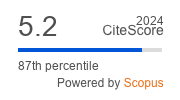Article | Open Access
Nepal’s Status‐Seeking Endeavors: Between Normative Convergence and Geopolitical Interests
| Views: | 1544 | | | Downloads: | 2262 |
Abstract: Due to limited material and geopolitical factors, the agency of small states is limited in international politics. As such, these states may seek to mitigate such weaknesses through status-seeking, adopting peculiar foreign policy approaches or international commitments to signal to more powerful actors about specific political or normative affinities. In this article, the conceptual framework of social identity theory, specifically social mobility, is used to assess Nepal’s foreign policy choices. It is argued that Nepal pursues the identity management strategy of social mobility in the form of normative conformance with more powerful actors to reinforce its status in the international community but not necessarily to rise up in the hierarchy of states. Social mobility through normative conformance not only allows Nepal to elevate its status with higher-status groups like the EU, the UN, and US (which are the country’s primary development partners), but it also reinforces Nepal’s interest in maintaining (and if possible, expanding) its agency as a sovereign state which is constrained due to its geopolitical location in between much larger neighbors, India and China. Nepal’s normative convergence efforts are broadly categorized into two specific types of commitments: (a) multilateralism and (b) normative congruence with development partners. Both of these normative conformance approaches seek to emulate the values and practices of the higher-status group—the US, the UN, and the EU.
Keywords: China; European Union; India; Nepal; small states; status
Published:
© Bibek Chand. This is an open access article distributed under the terms of the Creative Commons Attribution 4.0 license (http://creativecommons.org/licenses/by/4.0), which permits any use, distribution, and reproduction of the work without further permission provided the original author(s) and source are credited.


